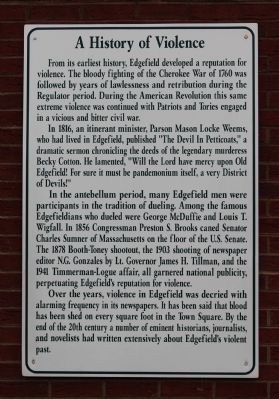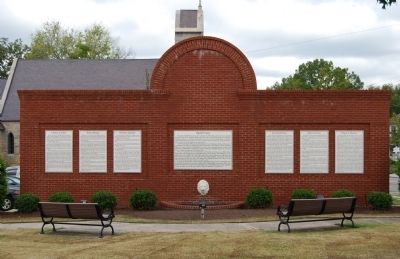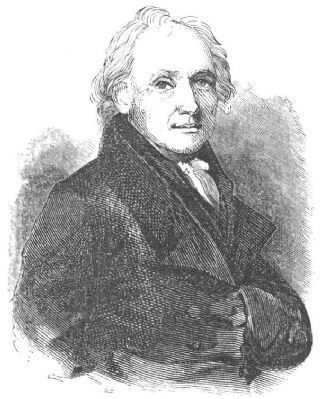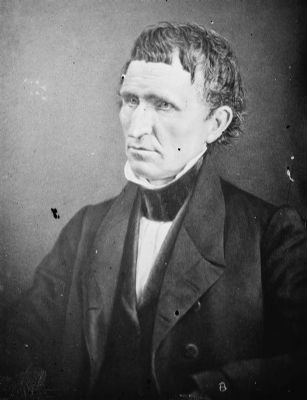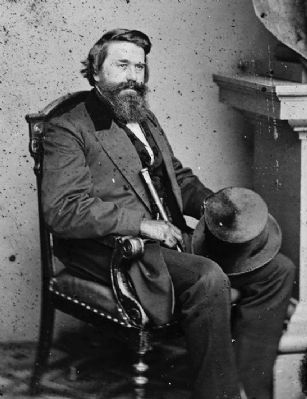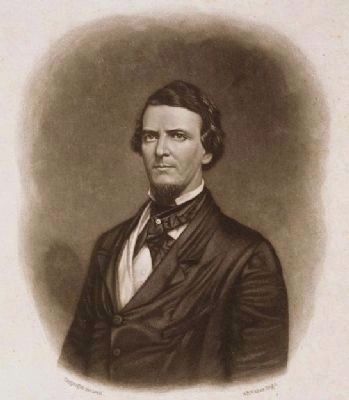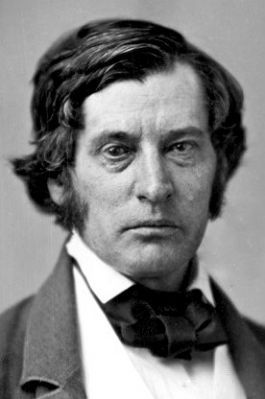Edgefield in Edgefield County, South Carolina — The American South (South Atlantic)
A History of Violence
From its earliest history, Edgefield developed a reputation for violence. The bloody fighting of the Cherokee War of 1760 was followed by years of lawlessness and retribution during the Regulator period. period. During the American Revolution this same extreme violence was continued with Patriots and Tories engaged in a vicious and bitter civil war.
In 1816, an itinerant minister, Parson Mason Locke Weems, who had lived in Edgefield, published "The Devil in Petticoats," a dramatic sermon chronicling the deeds of the legendary murderess Becky Cotton. He lamented, "Will the Lord have mercy upon Old Edgefield! For sure it must be pandemonium itself, a very District of Devils!"
In the antebellum period, many Edgefield men were participants in the tradition of dueling. Among the famous Edgefieldians who dueled were George McDuffie and Louis T. Wigfall. In 1856 Congressman Preston S. Brooks caned Senator Charles Sumner of Massachusetts in the floor of the U.S. Senate. The 1878 Booth-Toney shootout, the 1903 shooting of newspaper editor N.G. Gonzales by Lt. Governor James H. Tillman, and the 1941 Timmerman-Logue affair, all garnered national publicity, perpetuating Edgefield's reputation for violence.
Over the years, violence in Edgefield was decried with alarming frequency in its newspapers. It has been said that blood has been shed on every square foot in the Town Square. By the end of the 20th century a number of eminent historians, journalists, and novelists had written extensively about Edgefield's violent past.
Topics. This historical marker is listed in these topic lists: Colonial Era • Settlements & Settlers • War, US Revolutionary. A significant historical year for this entry is 1760.
Location. 33° 47.4′ N, 81° 55.8′ W. Marker is in Edgefield, South Carolina, in Edgefield County. Marker is at the intersection of Main Street (State Highway 23) and Buncombe Street (U.S. 25), in the median on Main Street. Touch for map. Marker is in this post office area: Edgefield SC 29824, United States of America. Touch for directions.
Other nearby markers. At least 10 other markers are within walking distance of this marker. Agricultural History (here, next to this marker); Political Heritage (here, next to this marker); The Name "Edgefield" (here, next to this marker); Industrial History (within shouting distance of this marker); Religion & Education (within shouting distance of this marker); Edgefield County (within shouting distance of this marker); First Term of Court (within shouting distance of this marker); Edgefield County World War I Memorial (within shouting distance of this marker); Old Law Building
(within shouting distance of this marker); Welcome to Historic Edgefield (within shouting distance of this marker). Touch for a list and map of all markers in Edgefield.
Also see . . .
1. Anglo-Cherokee War. The Anglo-Cherokee War (1758–1761) (Cherokee: "War with those in the red coats" or "War with the English"), also known (from the Anglo-European perspective) as the Cherokee War, the Cherokee Uprising, the Cherokee Rebellion, was a conflict between British forces in North America and Cherokee Indians during the French and Indian War. (Submitted on October 9, 2010, by Brian Scott of Anderson, South Carolina.)
2. The Town of Edgefield, S.C. The Town of Edgefield was founded in 1785 and emerged in the early 1800s as a thriving trade center for surrounding farms. (Submitted on October 9, 2010, by Brian Scott of Anderson, South Carolina.)
3. Edgefield, South Carolina. Edgefield is a town in Edgefield County, South Carolina, United States. (Submitted on October 9, 2010, by Brian Scott of Anderson, South Carolina.)
4. Parson Weems. Mason Locke Weems (October 11, 1756 – May 23, 1825), generally known as Parson Weems, was an American printer and author. (Submitted on October 15, 2008, by Brian Scott of Anderson, South Carolina.)
5. The Legend of Becky Cotton. SC ETV short film about the ghost of Becky Cotton haunting the lake where she dumped her husband's body after killing him with an axe. (Submitted on October 15, 2008, by Brian Scott of Anderson, South Carolina.)
6. George McDuffie. George McDuffie (August 10, 1790 – March 11, 1851) was a Governor of South Carolina and a member of the United States Senate. (Submitted on October 15, 2008, by Brian Scott of Anderson, South Carolina.)
7. Louis T. Wigfall. Louis Trezevant Wigfall (April 21, 1816 – February 18, 1874) was an American politician from Texas and a Confederate general during the American Civil War. (Submitted on October 15, 2008, by Brian Scott of Anderson, South Carolina.)
8. Preston Brooks. Preston Smith Brooks (August 5, 1819 – January 27, 1857) was a Democratic Congressman from South Carolina, known for physically beating senator Charles Sumner on the floor of the United States Senate. (Submitted on October 15, 2008, by Brian Scott of Anderson, South Carolina.)
9. Charles Sumner. Charles Sumner (January 6, 1811 – March 11, 1874) was an American politician and statesman from Massachusetts. (Submitted on October 15, 2008, by Brian Scott of Anderson, South Carolina.)
10. Narciso Gener Gonzales. Narciso Gener Gonzales (1859 – January 15, 1903) was born in Paulo Parish, South Carolina. (Submitted on October 15, 2008, by Brian Scott of Anderson, South Carolina.)
11. The 1903 Tillman-Gonzales Affair: South Carolina's "Crime of the Century". Narciso Gener Gonzales, S.C.’s most celebrated newspaper editor at the turn of the 20th century, was shot in broad daylight and killed by Lt. Governor James H. Tillman on the afternoon of January 15, 1903. (Submitted on November 14, 2012, by Brian Scott of Anderson, South Carolina.)
12. Bitter S.C. feud led to 1903 'crime of the century'. The day 100 years ago an assassin gunned him down on a Columbia street, newspaper editor N.G. Gonzales was feeling fine - a passer-by described him as "particularly pleased with something" - and he was hungry. (Submitted on November 14, 2012, by Brian Scott of Anderson, South Carolina.)
Additional commentary.
1. George McDuffie (1790 - 1851)
George McDuffie, (father-in-law of Wade Hampton [1818-1902]), a Representative and a Senator from South Carolina; born in Columbia County, Ga., August 10, 1790; attended an old-field school and a private academy; graduated from South Carolina College (now the University of South Carolina) at Columbia in 1813; studied law; admitted to the bar in 1814 and commenced practice in Pendleton, Anderson County, S.C.; member, State house of representatives 1818-1819; elected to the Seventeenth and to the six succeeding Congresses and served from March 4, 1821, until his resignation in 1834; chairman, Committee on Ways and Means (Nineteenth through Twenty-second Congresses); one of the managers appointed by the House of Representatives in 1830 to conduct the impeachment proceedings against James H. Peck; Governor of South Carolina 1834-1836; president of the board of trustees of South Carolina College; elected as a Democrat to the United States Senate to fill the vacancy caused by the resignation of William C. Preston; reelected, and served from December 23, 1842, until August 17, 1846, when he resigned; chairman, Committee on Foreign Relations (Twenty-ninth Congress); died at ‘Cherry Hill,’ Sumter District (now Sumter County), S.C., March 11, 1851; interment in Cherry Hill Cemetery, Sumter District, S.C. (Source: Biographical Directory of the U.S. Congress.)
— Submitted November 14, 2012, by Brian Scott of Anderson, South Carolina.
2. Louis Trezevant Wigfall (1816 - 1874)
Louis Trezevant Wigfall, a Senator from Texas; was born near Edgefield, Edgefield District, S.C., April 21, 1816; pursued classical studies; attended the University of Virginia and graduated from South Carolina College (now the University of South Carolina) at Columbia in 1837; served as a lieutenant of Volunteers in the Seminole War in Florida in 1835; attended the law department of the University of Virginia at Charlottesville; admitted to the bar in 1839 and commenced practice in Edgefield, S.C.; moved to Marshall, Tex., in 1848; member, State house of representatives 1849-1850; member, State senate 1857-1860; elected as a Democrat to the United States Senate to fill the vacancy caused by the death of J. Pinckney Henderson and served from December 5, 1859, until March 23, 1861, when he withdrew; expelled from the Senate on July 11, 1861, for support of the rebellion; served in the Confederate Army during the Civil War; represented the State of Texas in the Confederate Congress; after the war moved to London, England; returned to the United States in 1873 and settled in Baltimore, Md.; died in Galveston, Tex., February 18, 1874; interment in the Episcopal Cemetery. (Source: Biographical Directory of the U.S. Congress.)
— Submitted November 14, 2012, by Brian Scott of Anderson, South Carolina.
3. Preston Smith Brooks (1819 - 1857)
Preston Smith Brooks, a Representative from South Carolina; born in Edgefield District, S.C., August 5, 1819; attended the common schools and was graduated from South Carolina College (now the University of South Carolina) at Columbia in 1839; studied law; was admitted to the bar in 1845 and commenced practice in Edgefield, S.C.; member of the State house of representatives in 1844; served in the Mexican War as captain in the Palmetto Regiment of South Carolina Volunteers; elected as a Democrat to the Thirty-third and Thirty-fourth Congresses and served from March 4, 1853, until July 15, 1856, when he resigned even though the attempt to expel him for his assault upon Charles Sumner on May 22, 1856, had failed through lack of the necessary two-thirds vote; chairman, Committee on Expenditures in the Department of State (Thirty-fourth Congress); reelected to the Thirty-fourth Congress to fill the vacancy caused by his own resignation and served from August 1, 1856, until his death in Washington, D.C., January 27, 1857; had been reelected to the Thirty-fifth Congress; interment in Willow Brook Cemetery, Edgefield, S.C. (Source: Biographical Directory of the U.S. Congress.)
— Submitted November 14, 2012, by Brian Scott of Anderson, South Carolina.
4. Charles Sumner (1811 - 1874)
Charles Sumner, a Senator from Massachusetts; born in Boston, Mass., January 6, 1811; attended the Boston Latin School; graduated from Harvard University in 1830 and from the Harvard Law School in 1833; admitted to the bar the following year and commenced the practice of law in Boston, Mass.; lectured at the Harvard Law School 1836-1837; traveled extensively in Europe 1837-1840; declined the Whig nomination in 1846 for election to the Thirtieth Congress; one of the founders of the Free Soil Party in 1848; unsuccessful candidate for election in 1848 on the Free Soil ticket to the Thirty-first Congress; elected to the United States Senate in 1851 as a Free Soiler; reelected as a Republican in 1857, 1863, and 1869 and served from April 24, 1851, until his death; chairman, Committee on Foreign Relations (Thirty-seventh through Forty-first Congresses); removed as chairman of the Committee on Foreign Relations in 1871 as a result of differences with President Ulysses S. Grant over policy in Santo Domingo; chairman, Committee on Privileges and Elections (Forty-second Congress); was assaulted in the Senate chamber by Representative Preston Brooks of South Carolina on May 22, 1856, and due to injuries received did not resume full Senate duties until December 1859; died in Washington, D.C., March 11, 1874; lay in state in the Rotunda of the U.S. Capitol, March 13, 1874; interment in Mount Auburn Cemetery, Cambridge, Mass. (Source: Biographical Directory of the U.S. Congress.)
— Submitted November 14, 2012, by Brian Scott of Anderson, South Carolina.
Credits. This page was last revised on November 15, 2020. It was originally submitted on October 15, 2008, by Brian Scott of Anderson, South Carolina. This page has been viewed 4,222 times since then and 36 times this year. Photos: 1, 2. submitted on October 15, 2008, by Brian Scott of Anderson, South Carolina. 3, 4, 5, 6, 7. submitted on October 9, 2010, by Brian Scott of Anderson, South Carolina.
